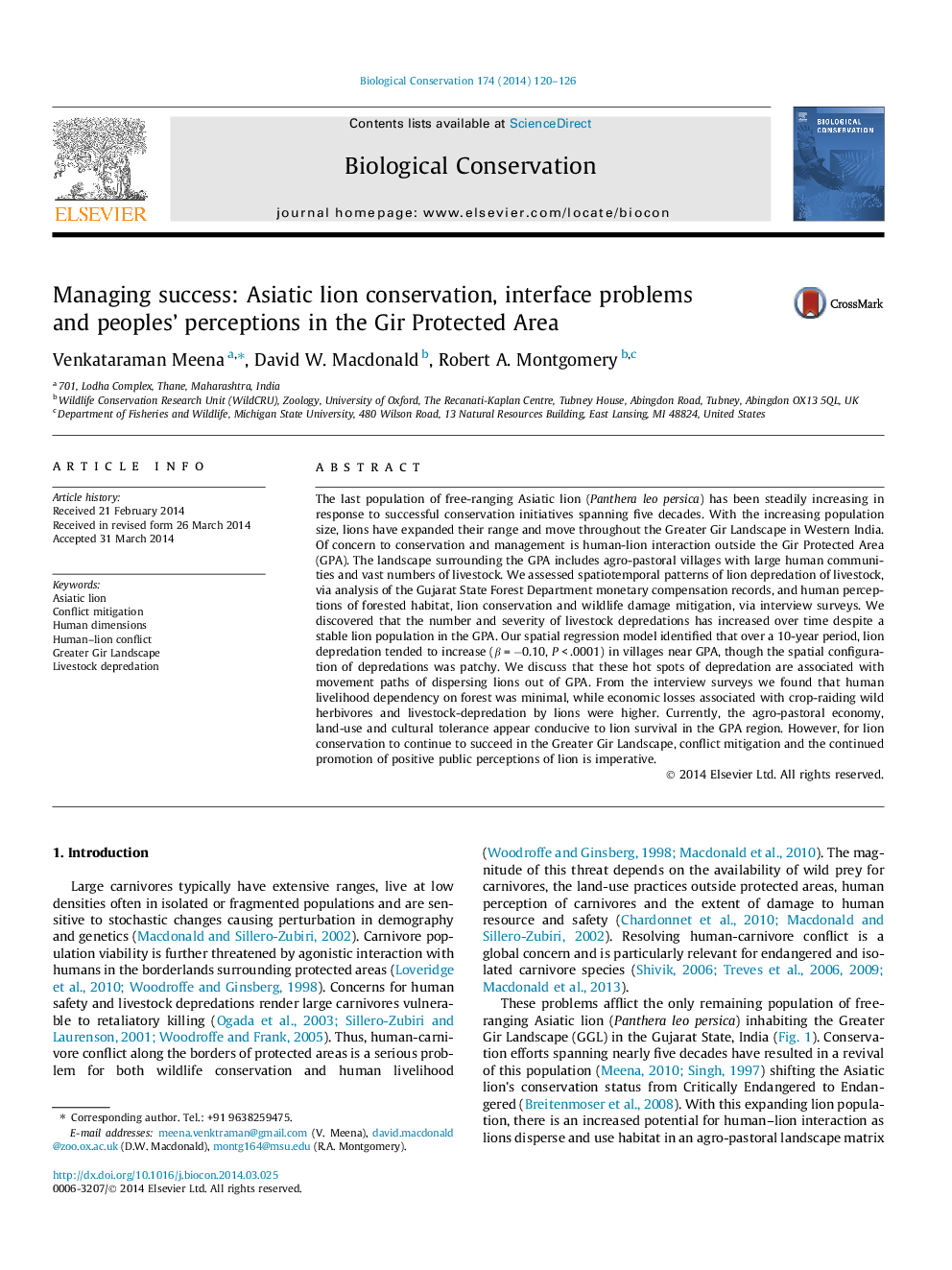| Article ID | Journal | Published Year | Pages | File Type |
|---|---|---|---|---|
| 6300272 | Biological Conservation | 2014 | 7 Pages |
Abstract
The last population of free-ranging Asiatic lion (Panthera leo persica) has been steadily increasing in response to successful conservation initiatives spanning five decades. With the increasing population size, lions have expanded their range and move throughout the Greater Gir Landscape in Western India. Of concern to conservation and management is human-lion interaction outside the Gir Protected Area (GPA). The landscape surrounding the GPA includes agro-pastoral villages with large human communities and vast numbers of livestock. We assessed spatiotemporal patterns of lion depredation of livestock, via analysis of the Gujarat State Forest Department monetary compensation records, and human perceptions of forested habitat, lion conservation and wildlife damage mitigation, via interview surveys. We discovered that the number and severity of livestock depredations has increased over time despite a stable lion population in the GPA. Our spatial regression model identified that over a 10-year period, lion depredation tended to increase (β = â0.10, P < .0001) in villages near GPA, though the spatial configuration of depredations was patchy. We discuss that these hot spots of depredation are associated with movement paths of dispersing lions out of GPA. From the interview surveys we found that human livelihood dependency on forest was minimal, while economic losses associated with crop-raiding wild herbivores and livestock-depredation by lions were higher. Currently, the agro-pastoral economy, land-use and cultural tolerance appear conducive to lion survival in the GPA region. However, for lion conservation to continue to succeed in the Greater Gir Landscape, conflict mitigation and the continued promotion of positive public perceptions of lion is imperative.
Related Topics
Life Sciences
Agricultural and Biological Sciences
Ecology, Evolution, Behavior and Systematics
Authors
Venkataraman Meena, David W. Macdonald, Robert A. Montgomery,
